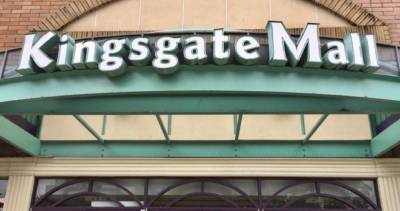Info-Dust Will Monitor Our Future Selves
There are a couple of emerging technologies that I've been keeping an eye on for the last few years. They've gradually percolated their way up from magazines like Scientific American into the business press and, now, mainstream daily newspapers. It seems like time to discuss them.
The first is radio-frequency identification, coming soon to a warehouse or retailer near you. RFID works like bar codes (each unit contains a number that identifies a specific product), but instead of needing to be scanned directly by a laser beam, they use radio waves. A tiny chip and antenna are attached to or built into an item (they can be as small as a sand grain); the RFID squawks back its identifying code when probed by a radio signal from a reader.
No batteries are required (the reader's radio signal provides the power to the chip), some scanners work up to 10 metres away, the ID number is three times the length of a bar code's (making for more precise identification of the ever-growing panoply of products), and the cost per unit is small. According to the July issue of Wired, Gillette has ordered up to a half-billion of them at a dime apiece. That's an American dime, but it's still pretty cheap and will get much cheaper.
There are lots of advantages to RFID for businesses, from manufacturers to sales outlets, which is why big companies like the Albertsons grocery chain are demanding that their top suppliers use the tags on all shipments. Wired reports that a company the size of Wal-Mart could save US$407 million if every pallet of goods it received had a tag, or US$7.6 billion if every single item had one. From consumers' point of view, I guess the major benefit is that purchases could be rung up in an instant instead of being dragged over a scanner one by one.
There are all kinds of practical applications you can predict from such a data-rich environment. Inventory counts could be accomplished just by walking through the warehouse; or, with a full-time radio network, each item could be instantly located, counted, and tracked. Never again need the shelves be empty of Pepsodent (as long as there's a box somewhere in the back).
Still, no new technology is without drawbacks. For one, a lot of warehouse and sales-clerk jobs could be eliminated. And what will all the shoplifters do? Since RFID tags can easily be used for inventory control (in the sense of keeping inventory from leaving the premises), a store could not only detect a theft but also determine what you took and which door you left from. And what if you're a legitimate customer but you resent the level of information-gathering that such a system could lead to? Let's not forget the convenience factor for burglars and robbers, who will be able to use a portable reader to scan you or your home and see what you own. And hey, how long until some government decides it's just common sense to implant one in each of its citizens?
The other emerging technology overlaps somewhat: the concept of simple sensor networks that use a multitude of small devices to provide coverage of an area. Think of the seismic detectors that monitor earthquake activity, but shrunk down in size. How small? Well, the ideal everyone's working toward is called "smart dust", nanoscale-size units that you wouldn't even see. Of course, that dream is contingent on the development of all kinds of nanotechnology solutions like power sources, memory storage, and effective transmitter ranges--which seem to be a few years off--but that doesn't mean that a lot of progress hasn't been made in shrinking the size of ordinary macro-scale units.
Individual sensors (which could detect heat, motion, sound, light, humidity, air quality, trace chemicals, or any other measurable factor) are called motes, and a collection of them creates a mesh network. Each mote only needs enough transmitting power to pass a message along to its neighbour, which forwards it, a cycle repeated until the data reaches the intended destination. In the same way that wireless nodes are creating connected areas of Internet coverage, sensor grids can form regions of information-monitoring. Depending on what's being monitored, this is either a great innovation or an ominously Orwellian one.
To concentrate on the better applications, imagine a series of detectors that watch temperature and send an alert when it rises above a certain threshold, indicating a fire. You could put them in forests, blanketing the region with tiny ones dropped from a plane or carefully placing larger units in key locations. While you're at it, toss in a solar panel, GPS locator, and sensors for humidity levels or whatever else you want.
Back at command central, a computer display could show you the status of the network grid, an information map of the region in real time. The data resolution in such a setup could be down to a few metres (depending on the density of sensor coverage), providing the earliest possible notification of a fire, perhaps before the first hint of smoke even clears the treetops. As the fire spreads you'd also have an accurate map of its borders and movement patterns, to deploy firefighting resources in a more efficient manner.
As for more nefarious applications, well, just let your imagination run wild. They'll be dropped on battlefields to detect troop movements and stacked up five metres deep along some countries' borders. In a couple of decades we'll all move through sensor-laden environments, sending off information waves with every step, from the brands of clothes you've got on to the contents of your shopping bag. Looking on the bright side, you'll probably never be able to misplace your wallet, sunglasses, or keys again.















Comments